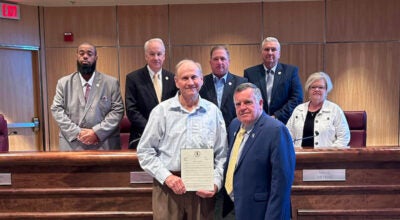Schools developing plan to cope with loss of hospital
Published 6:28 pm Thursday, November 1, 2012
By Emily Etheredge and Emily Beckett
After news broke Monday of Chilton Medical Center closing, local school and county leaders began re-evaluating emergency plans for students and faculty at Chilton County schools.
Superintendent Dave Hayden broached the subject at the Board of Education meeting Tuesday and welcomed suggestions on how to deliver the same level of emergency medical care to about 7,700 students despite the county’s only emergency room being closed.
Hayden said Thursday he had spoken with several of the city’s leaders, including Clanton Fire Chief David Driver and Mayor Billy Joe Driver.
“They’re both hopeful that things are going to be resolved,” Hayden said. “We will do anything we can.”
Chilton County currently has 16 fire departments, two ambulance companies and fewer than 10 ambulances operating every day.
The closest hospitals are located in Alabaster and Prattville.
One aspect of the situation Hayden looked at was having helicopter landing sites close to all schools and accessible by road in the event of an emergency.
“Not just for schools,” Hayden said. “I think it’s a good thing just for the communities as well as the schools.”
Joe Acker, executive director of Birmingham Regional EMS System, coordinates the helicopters called to Chilton County from nearby locations including Birmingham, Sylacauga and areas near Maplesville and Montgomery.
Acker said helicopter transport is set up through the rescue unit that would respond to the school first in an emergency.
“If they determine they need a helicopter, they’ll notify dispatch (911),” Acker said of the rescue units. “They will determine which is the closest aircraft and request that aircraft.”
Chilton County EMA Director Bill Collum said the rescue unit can have an agreement with each school on where helicopters are to land on school grounds, and the unit can give helicopter pilots the GPS coordinates for the landing site.
“You’ve got emergency response units that cover every school in the county,” Collum said. “They can coordinate landing zones for helicopters. You don’t have a big problem there. The only problem is how far you have to take those kids.”
If necessary, Hayden said, an area on school grounds such as a football field could be evacuated if a helicopter needed to land there.
“Helicopters have been known to land on athletic fields,” Hayden said. “You need a site that’s pretty close but not where there would be a lot of people.”
The first step is for the rescue unit to determine what needs to be done.
“Most likely, (the school) would wait for a ground transport unit to get on scene and make the determination that the child was injured or ill enough that they needed the air transport because of the time element,” Acker said. “Normally, we’re not going to send a patient via air unless they’re going to benefit from the rapid transport. Paramedics 99 percent of the time are going to make that decision if air transport is needed.”
Acker said certain cases would need to be taken outside the county anyway, depending on the type and severity of the illness or injury.
In these cases, residents would be advised to call 911 immediately.
“We need a behavior change in Chilton County,” said Acker, a Chilton County resident himself. “If somebody is having chest pain, or they think they’re having a heart attack or stroke, they need to dial 911 and have EMS on the scene for ground or air transport.






